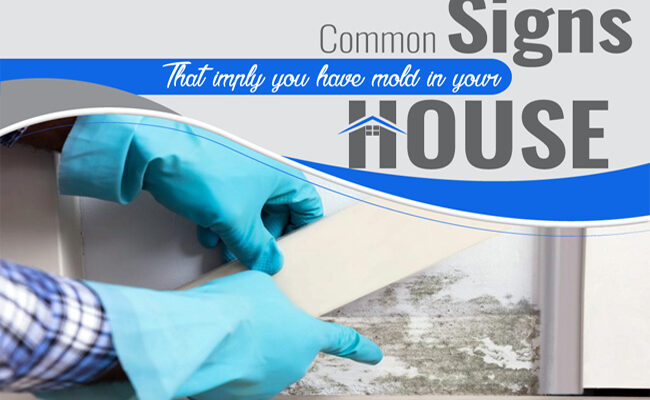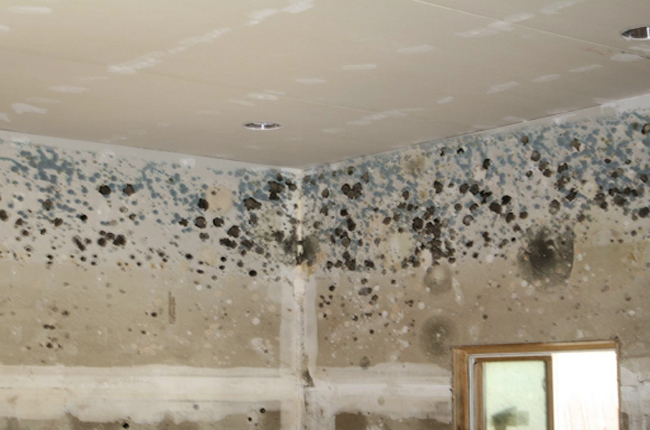
A part of the fungi family, mold is a common organism around the world. It can grow both outdoors and indoors. Out in nature, mold plays an important role in the ecosystem. It helps to break down animal matter, dead plants, leaves, etc.
However, indoor mold growth is a big problem that many homeowners deal with. Other than causing an off-putting, musty smell, deteriorating the decor walls, and compromising the structural integrity of the house; mold can also cause health issues like infections, allergies, and asthma.
Read more to know more about mold and mold cleaning.
How Does Mold Find a Way In?
Usually, mold travels through air to find a way in. The tiny invisible spores can enter your house via windows, doors, clothes, shoes, pets, and HVAC vents. Once inside, upon finding the ideal conditions, mold can thrive easily. The most common areas where you can spot this tiny organism is –
- Sinks, bathtubs, and showers
- Around window frames
- Near leaky pipes
- Crawl spaces
- Attics
- And basements
The tiny spores latch onto myriad objects and materials like carpeting, fabrics, wood, paper, ceiling tiles, wallpaper, insulation, and paint.
Signs of Mold Inside a Household
Bubbly/Blistering Walls
Bubble formation on walls is a common sign of mold infestation. Areas with the highest moisture content will mostly have these bubbles. It’s important to examine the basement walls, bathrooms, and areas around the window to confirm the issue. Areas near a leaky pipe or window sill are a breeding ground for mold infestation.
In such a case, you might have to scrape down the paint, clean and dry the surface, and patch things up before repainting the wall to fix the issue.
Musty Smell
Usually, a strong, musty, unpleasant odor is a dead giveaway that mold infestation is in progress. The smell is more prominent around damp and moist areas around the house like sink, bathroom, and kitchen.
Rust
This is another classic sign to watch out for. When there’s excessive moisture indoor, it finds a way to latch onto all kinds of objects including metallic ones. It’s only a matter of time before the metal starts to rust due to excess water content in the air.
Allergies
Mold continues to release tiny spores in the air that you eventually inhale. Although the immune system is wired to fight off these harmful spores, many people contract the flu due to mold infestation.
Therefore, if you can’t seem to shake off flu-like symptoms and allergies; it might be a sign that you are dealing with mold inside the house. Other than flu, mold can also cause sneezing, coughing, skin irritation, sore throat, and a runny nose.
Visible Dark Patches
When you know what mold looks like, it is a lot easier to spot. In terms of appearance, it looks like dirt smudges and tiny dark spots. At times, it can also appear as silky threads. Mold can be of various colors with a velvety/furry texture. It’s good to educate yourself about what different kinds of infestations look like so that it’s easier for you to spot them in the early stages.
What Causes Mold?

Water Issues
If you have a history of moisture problems around the house, then you’re more likely to deal with this kind of issue. Households that have a history of water issues should always be more cautious. Look for warning symptoms like water stains on the ceiling, discoloration of walls, discolored and/or warped floors, etc.
Condensation
If you notice water drops on windows or walls, it’s a sign that there’s excessive humidity in the air. In the lack of proper ventilation and heating, humidity can give rise to condensation. This provides perfect conditions for the infestation. Carefully examine areas for condensation such as metal pipes and windows to detect a mold infestation in play. It’s good to place moisture absorbers around the house along with dehumidifiers to suck the excess water from the air.
Lumpy Attic insulation
Lumpy, uneven-looking attic insulation is a big problem that needs immediate attention. Several reasons could be causing a lymph attic insulation such as a leaky roof or a missing tile. It could also be due to improper ventilation, poor circulation, and/or blocked ducts.
How to Treat Mold?
Most of the time, household mold is easy to treat. However, if the infestation has spread beyond normal levels, then you may need to hire a professional.
With that said, here are some commercial products you can use to remove mold –
- A bleach solution made of 1 cup bleach for 1 gallon of water.
- Water and soap
Here’s how you can go about the cleaning process –
- Wear non-porous gloves, an N95 respirator, a face mask, and protective eyewear.
- Open the windows
- Avoid mixing ammonia or other solutions with bleach to avoid toxic fumes
- Use a scrub or a brush to scrape off the surface. Be sure to get it all out.
- You may have to throw away porous infected materials like furniture, carpeting, and clothing.
- Only paint after the mold is fully gone.
Preventive Measures
Mold is a common worldwide problem and you can never fully get rid of it. However, you can create an unsuitable living environment for it. To do so, you can take the following steps –
- Treat water issues such as a leaky faucet as quickly as possible. Always keep the areas dry by avoiding excess water.
- Repair leaky windows.
- Use the HVAC unit and a dehumidifier to maintain the humidity level to 50% or below.
- Regularly service furnaces, air conditioners, and change filters at regular intervals.
- Avoid carpeting in areas like the basement, laundry rooms, and bathrooms.
- Ensure proper ventilation. Place exhaust fans around the house with vents leading outside.
- While bathing or showering, keep the fans and windows open.
- Use products that kill mold. Keep shower curtains dry and wipe down bathroom tiles after shower.
- Install the water drain away from the house.
- Do not leave wet clothes and towels lying around in the laundry room or near the washing machine.
- Dry the surface completely before applying paint. Mix mold inhibiting solutions in the paint before applying.
Bottom Line
With these simple but effective measures, anyone can keep mold infestation at bay. However, if you still find yourself dealing with this issue, it’s best to contact the mold removal experts.
Leave a Reply